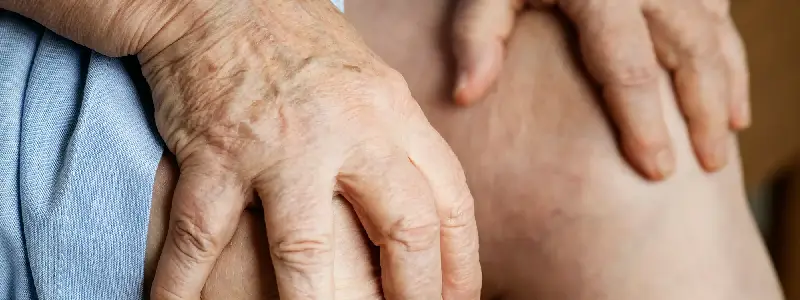Archives

Varicose veins, a common venous condition, affect a substantial portion of the population, particularly in the legs. These twisted, swollen veins can lead to discomfort and hinder one’s quality of life. In this comprehensive 3000-word guide, we’ll delve deep into varicose veins, covering symptoms, causes, and a thorough exploration of treatment options. Whether you’re searching for insights on varicose veins treatment, the efficacy of compression stockings, or dietary recommendations, you’ll find a wealth of information here.
Understanding Varicose Veins
Varicose veins are unsightly, often painful, swollen, and twisted veins that typically occur in the legs. They can vary in size and severity, ranging from small, thread-like veins to large, bulging ones, characterized by their blue or purple appearance just beneath the skin’s surface. Let’s break down the key aspects of varicose veins and their impact on individuals.
Causes of Varicose Veins
Understanding the underlying causes of varicose veins is vital for both prevention and effective treatment. While these twisted, swollen veins are a common vascular condition, their development can be attributed to several key factors.
Symptoms of Varicose Veins
The symptoms of varicose veins often manifest as discomfort in the legs and can range from mild to severe, affecting an individual’s daily life. Recognizing these symptoms is crucial for seeking appropriate care:
Throbbing: Varicose veins can cause a throbbing sensation in the legs. This pulsating discomfort can be particularly bothersome, hindering normal activities.
Skin Changes: In advanced cases of varicose veins, skin changes become noticeable. These changes can include skin discoloration, where the skin takes on a darker, brownish hue. In some instances, more severe skin issues like ulceration may occur. These changes are indicative of more progressed stages of varicose veins and warrant prompt attention.
Stages of Varicose Veins
Recognizing the stage of varicose veins is essential for determining the most appropriate treatment. While stages 1 and 2 may be managed with conservative approaches, stages 3 and 4 often require more intensive medical intervention. Consultation with a healthcare professional is crucial for accurate diagnosis and treatment planning, as the progression of varicose veins can vary among individuals.
Varicose Veins Treatment Guide
1. Conservative Management:
Lifestyle Changes: Many individuals with mild varicose veins benefit from simple lifestyle adjustments. Elevating the legs whenever possible, avoiding prolonged periods of standing or sitting, and regular exercise can help improve blood flow and alleviate discomfort.2. Compression Stockings:
Compression stockings for varicose veins are a common and effective non-invasive treatment option. These specially designed stockings exert gentle pressure on the legs, helping to improve blood flow and alleviate symptoms. They are particularly beneficial for individuals with mild to moderate varicose veins.3. Topical Treatments:
Varicose Veins Treatment Cream: Over-the-counter or prescription varicose veins treatment creams are available. These creams often contain ingredients like horse chestnut extract or witch hazel, which can help reduce the appearance of varicose veins and alleviate associated symptoms. They are typically applied directly to the affected area.4. Minimally Invasive Procedures:
Endovenous Laser Treatment (EVLT): EVLT is a minimally invasive procedure that employs laser technology to treat varicose veins. During the procedure, a laser fiber is inserted into the affected vein, and laser energy is used to close the vein. This causes the blood to reroute to healthier veins, improving both symptoms and appearance.Sclerotherapy: Sclerotherapy is a procedure in which a special solution is injected into the varicose veins. This solution causes the vein to close and eventually be absorbed by the body. It is often used for smaller varicose veins and spider veins.
5. Surgical Interventions:
In severe cases or when minimally invasive procedures are not effective, surgical interventions such as vein closure or vein stripping may be considered. Vein stripping involves physically removing the affected vein through small incisions, while vein closure uses techniques to seal the vein shut.
6. Medication:
In certain instances, medications such as medicine for varicose veins may be prescribed. These medications can help alleviate symptoms, reduce inflammation, and improve overall vein health.7. Natural Remedies:
Some individuals explore natural remedies as complementary treatments. These might include dietary supplements like horse chestnut extract, grape seed extract, or bioflavonoids. Additionally, lifestyle adjustments such as regular exercise and elevating the legs can be considered as part of natural care.The choice of treatment for varicose veins depends on the individual’s specific condition, the severity of the varicose veins, and their overall health. It’s crucial to consult with a healthcare professional for an accurate diagnosis and to discuss the most appropriate treatment plan. With the range of treatment options available, individuals with varicose veins have the opportunity to find relief from symptoms, improve vein health, and enhance their overall quality of life.
You might also like
The Diagnostic Value of CT Scans
Lab test at Home Food Intolerance Doctor at Home Physio
The Vital Role of Vaccinations: Essential for All Ages
Lab test at Home Food Intolerance Doctor at Home Physio
Breastfeeding Awareness Week: Simple Tips for New Moms
Lab test at Home Food Intolerance Doctor at Home Physio

